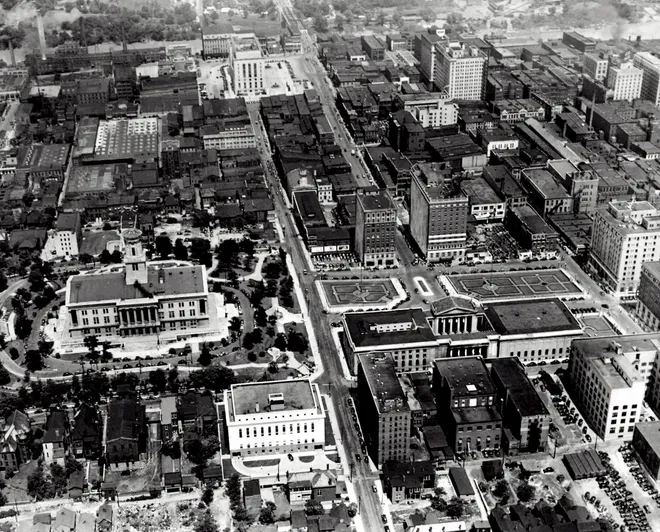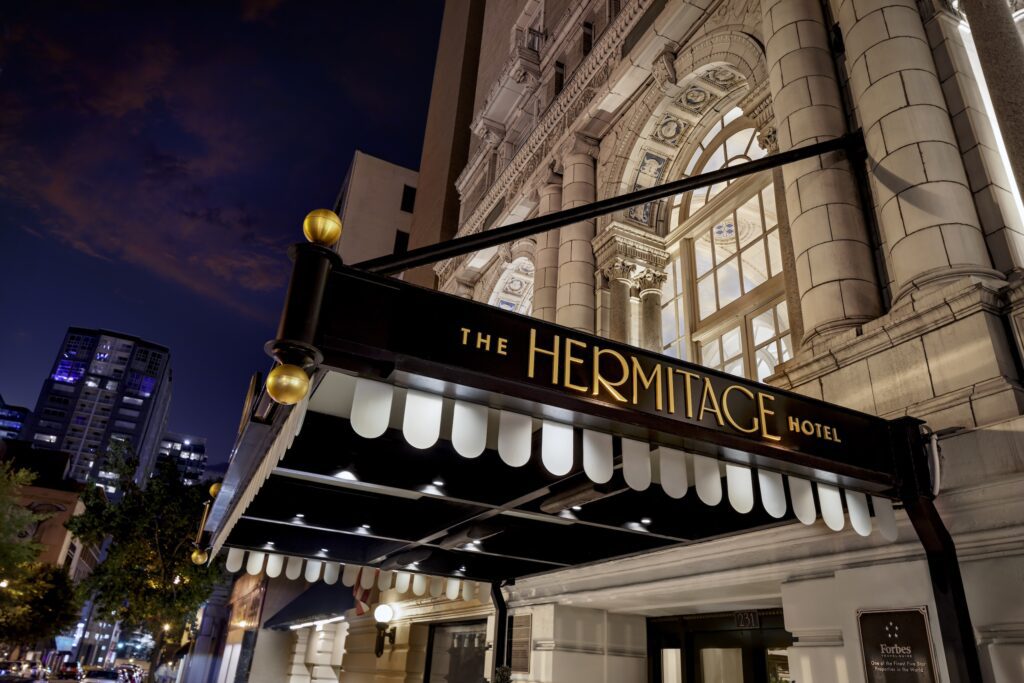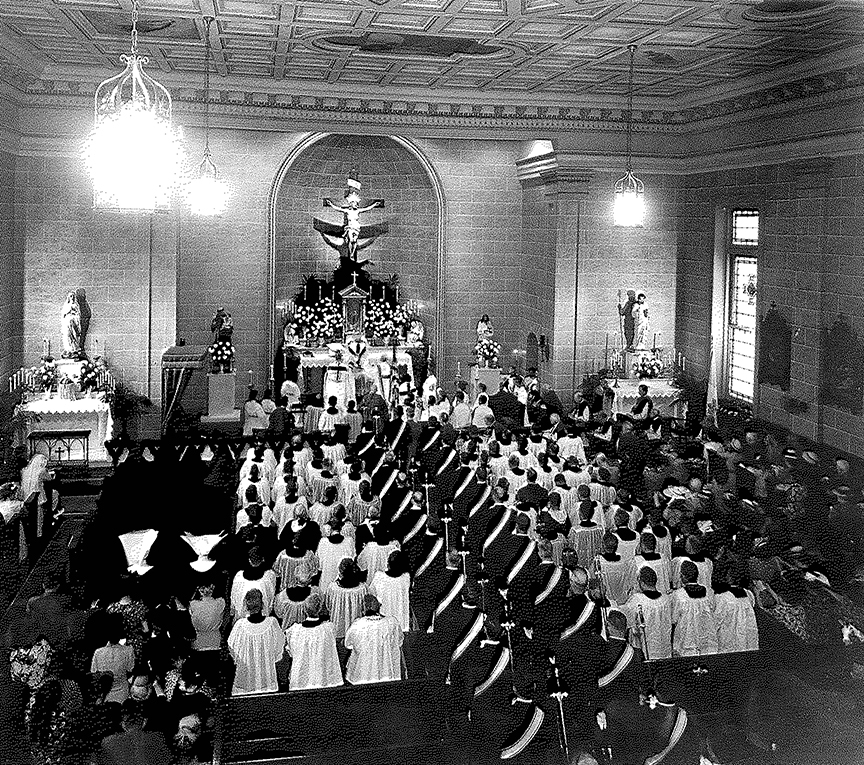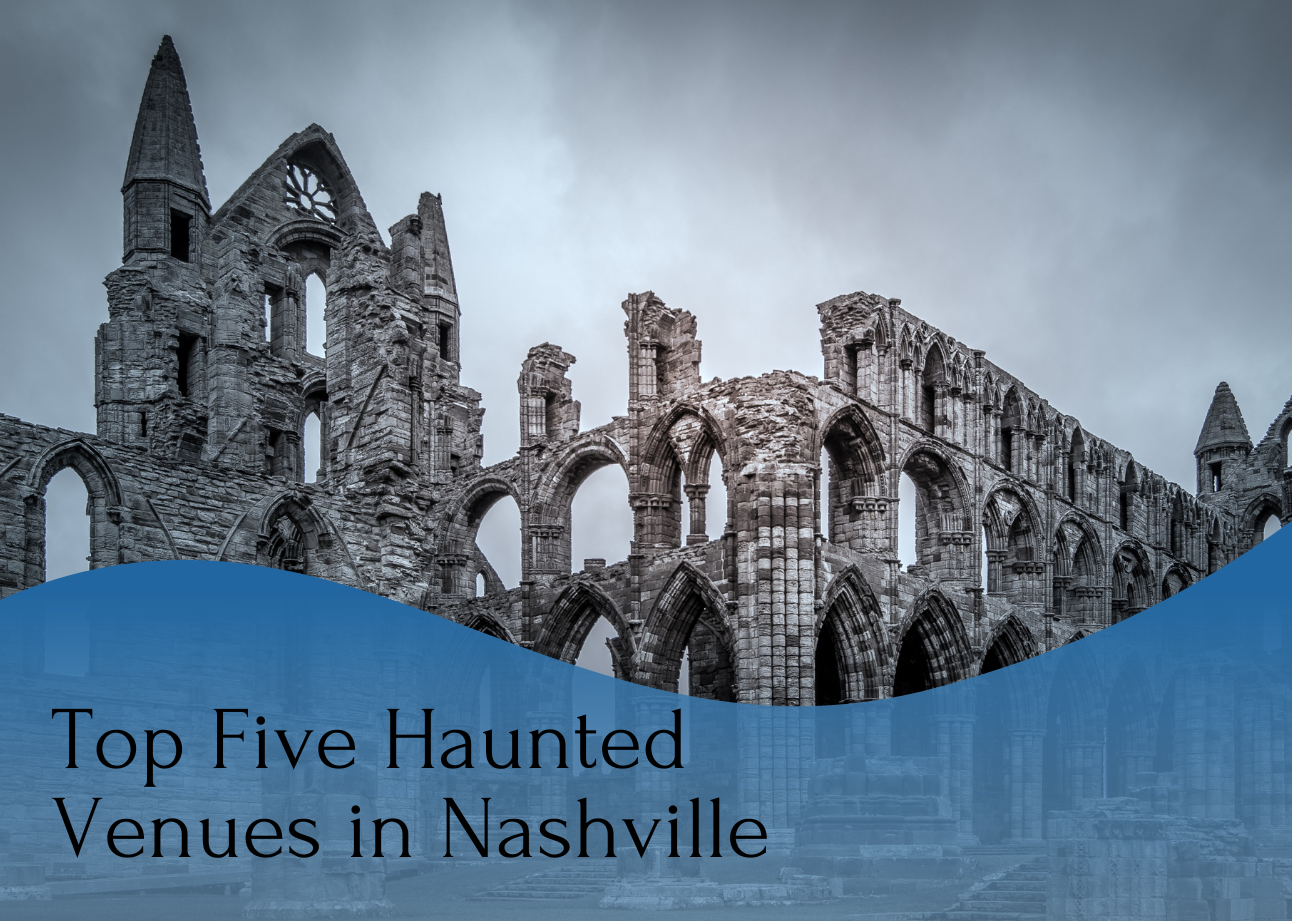It’s that time of year again for ghosts, hauntings, and tales of spirits from long past! Nashville is no different, we have the ghosts! With a vibrant history of a wide-open city, fortunes gained and lost, and suffering as a wartime city near some of the bloodiest battles of the Civil War, ghosts and hauntings are plenty. Joe Nashville is not a ghost person per se, but he likes a good background story. View our Dark Side Tour to hear more on Ghosts, Scandals, and Crime. Check out these notable Nashville spots for ghost enthusiasts specifically. Most sites noted here can be seen on Nashville Experience Tours Downtown Walking Tour or our new Dark Side Tour (18 + years).
Southern Turf/Rainbow Room

The Southern Turf building, situated in Nashville’s downtown arts district on 4th Avenue North (backs up to Printer’s Alley – Listed on the National Register of Historic Places), is always a stop for ghost and haunting enthusiasts. The home of a rocking and rambunctious saloon (also a gambling parlor) in the wide-open city of Nashville in the late 1800’s and early 1900’s, it also served as the home of Ike Johnson (aka, “Honest Ike”). Ike’s beloved workplace was a fixture on the then Cherry Street in Nashville’s “Men’s Quarter” or “Gentlemen’s Quarter.” He tended the bar in the first-floor saloon.
His affinity for the Southern Turf was so great, that he took his own life there rather than be evicted in 1916 in the whirlwind whispers of prohibition in Tennessee. Despite the good times in Nashville’s saloon district, powerful church forces were flexing their influence in the temperance and Tennessee prohibition movement (Tennessee’s prohibition pre-dates national prohibition). The local newspaper, The Tennessean, was reportedly an advocate of the temperance/prohibition movement as well. Ironically, the building was occupied by the newspaper after Ike’s demise and foreclosure. A likely setting for an angry deceased man to seek some sort of vengeance to future tenants. The Southern Turf is of notable historical and architectural significance and a stop for ghost tours in Nashville, with tourists looking to the upper floors for a sign of the broken and disgruntled Ike Johnson.
Tennessee State Capitol

Listed in the National Register of Historic Places
Four deceased remains are located on the state capitol grounds of Tennessee. You read that right. Two of the four are entombed in the building itself. William Strickland, the Philadelphia native/Nashville resident of the time, was the architect of the Greek structure and entombed in the northeast corner. Strickland died before the completion of the capital which took fourteen years to complete. His nemesis and rival, state of Tennessee Building Commission Chairman Samuel Morgan, passed after completion and is entombed in the southeast corner. Former President James K. Polk and his wife Sarah Childress Polk have a burial tomb outside on the northeast grounds near the building. It has been said that the capitol is the only U.S. state capitol used a burial ground. In addition, rumors of civil war soldiers being heard in the building’s towering steeple modeled after the Choragic Monument of Lysicrates in Athens that honors the Greek god Dionysus doing battle with Tyrrhenian pirates.
The Hermitage Hotel

Listed in the National Register of Historic Places
Tennessee’s first $1 Million hotel is quite notable in many respects. Since opening in 1910, the 5-Star hotel has hosted almost every U.S. president and notable visitors since it’s founding in the early 20th century. Home of the headquarters of women’s suffrage (the anti-suffrage folks as well) in 1920, the hotel etched itself into history as the key landmark in the passage of the 18th Amendment giving women the right to vote. It’s been said that Will Rogers brought a horse into the opulent lobby at one point, home of “afternoon teas” that still take place. Famous Billiard player Minnesota Fats took residence in the hotel in the 1980’s and played pool with guests. John Dillinger, the notorious mobster, is said to have stayed here. The art deco basement men’s restroom has been voted “best rest room in America” and a favorite photo opportunity for tourists and guests (yes, ladies can enter for a photo). In addition, to history and notoriety, folklore reflects the story of a baby’s tragic passing in room 910 and can still be heard crying at times. Although that specific room no longer exists, it is now part of a larger suite. Rumors of images of figures in different parts of the hotel persist to this day.
Downtown Presbyterian Church

Listed in the National Register of Historic Places
A second Nashville ghostly feature of architect William Strickland is this beloved downtown church. Noted as the home church of General and President Andrew Jackson, the current structure was built prior to the Civil War in 1851 in the Egyptian Revival style. General Jackson was awarded a ceremonial sword after the War of 1812 on the steps of the church (the previous building was destroyed by fire). During the bloody battles that rage in areas near Nashville, the church served as one of the many Union hospitals during the war and the Union military occupation of the city. Due to the immense suffering a tragedy, the church is said to be haunted by stories of strange noises and faint figures appearing from time to time.
St. Mary’s of the Seven Sorrows Catholic Church

Listed in the National Register of Historic Places
Prussian-born architect Adolphus Heiman designed the first Catholic cathedral in Tennessee. Built-in 1847, the Greek Revival structure was also a Union military hospital in the Civil War and is the oldest standing church in Nashville. To add to the haunting potential, Richard Pius Miles the first Bishop of the Diocese of Nashville was buried under the church and later moved to a tomb in the church. Numerous tales of sightings of his and other ghostly images are allegedly seen on the upper floors of the church and continue to intrigue ghost enthusiasts. In 1972, Bishop Miles’s remains were unearthed (moved to the tomb) and reported to be incorrupt, prompting Wikipedia to note that he is the subject of canonization and potential sainthood. Ghost enthusiasts often attempt to capture images on camera at night of an alleged figure in an upstairs window.
The Dark Side
In the dark corners and shadowy history of these top 5 Nashville haunted places, the past lingers, and whispers of the supernatural echo through time. As we conclude our journey through these eerie, yet historical, sites, remember that the spirits of the past remind us that history is not merely a collection of facts but a living, breathing entity that continues to shape our present. Whether you believe in the paranormal or not, Nashville’s haunted places offer a glimpse into the mysteries of our shared past and the enduring allure of the unknown. Learn more about these tales in our Dark Side Tour. As you leave the haunted grounds, carry with you the stories, the legends, and the whispers of the spirits, for they are an integral part of Nashville’s captivating and ever-evolving narrative.
Sources/References/Background:
https://www.thehermitagehotel.com/
https://www.onlyinyourstate.com/tennessee/nashville/haunted-hermitage-hotel-nashville-tn/
https://en.wikipedia.org/wiki/Tennessee_State_Capitol
https://nashvilledowntown.com/go/st-marys-catholic-church
https://www.waymarking.com/waymarks/WMGJA2_Downtown_Presbyterian_Church_Nashville_Tennessee







Recent Comments